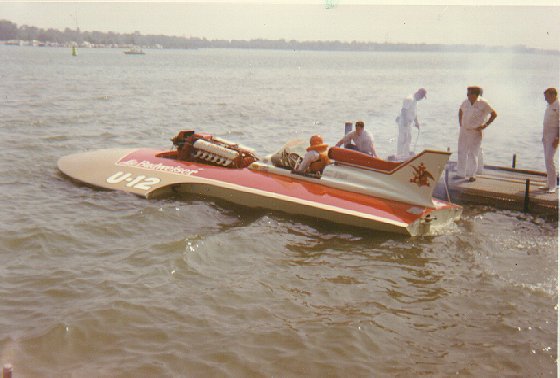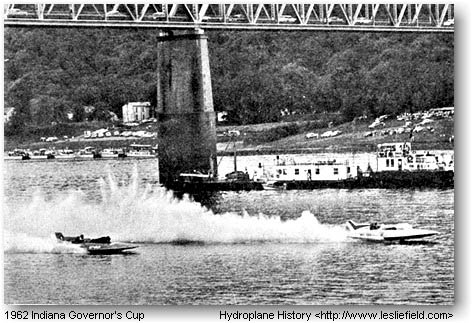When a beer distributor out of Florida named Bernie
Little brought a small time operation onto the circuit in 1963, few took
notice. This continued the
following year even after the team secured the instantly recognizable sponsorship of
Budweiser. Continuing as a mid-tier team
for the next couple of years, the team suffered through the lowest of lows in
1966, suffering through the loss of their driver Don Wilson on Black Sunday but
would rebound to win the team’s first two races in Tri-Cities and San Diego
with Bill Brow at the wheel. 1967 and 1968 would see the Miss Budweiser win the Kelowna race en route to a fourth place finish in the High Point standings both seasons. Despite winning four races over the previous three seasons, few could expect the emergence of this team over the next three years.
The
Miss Budweiser team entered a 1969 season that appeared to be wide open after the Miss Bardahl team scaled back their operation to a couple west coast races.
The Miss Budweiser, sporting a hull that was built in 1968 and continued
to grow stronger as the crew continued to dial the boat in throughout the
season, suddenly emerged as the team to beat in 1969. Also returning from 1968 was driver Bill Sterret. The team would double its win total of the previous four years in one season, winning four of seven
races including the Seafair Trophy and the Gold Cup at San Diego en route to a
championship.
Driver Bill Sterret
departed the team after the 1969 season and owner Bernie Little handed the ride
to Dean Chenoweth, who as was the runner up the Miss Budweiser the previous
season. Even with the new driver the
team’s winning ways continued, with four wins in eight races, including an
Indiana Governor’s Cup and a repeat win at the San Diego Gold Cup for another
High Point title. It appeared to the
team’s winning ways would continue in 1971, as the Miss Budweiser won the
season opener in Miami and the Dodge Cup in Detroit. The Miss Budweiser, however, would be shut
out of the winner’s circle for the rest of the season and would momentarily
lose the High Point lead to a Miss Madison team that had suddenly come on to win the Gold Cup in Madison and
the Atomic Cup in Tri-Cities. As the
Miss Madison’s Cinderella story turned into a pumpkin in the form of a blown
engine in Seattle, the Miss Budweiser would regain the High Point lead but
would once again find itself behind a suddenly unbeatable Pride of Pay’n
Pak. Despite being overshadowed by more
dramatic performances by its competitors and finding itself finishing behind
boats it had easily beaten the previous two years in the latter part of the
season, the Miss Budweiser had scored enough points over the course of the
season to secure its third straight High Point championship, but its winning
ways would be put on hold for a while.
1971 would prove to be a last hurrah for the old style shovel nosed
designed hulls and the Miss Budweiser would go winless in 1972. For much of the rest of the 1970’s, the Miss
Budweiser would find itself trailing behind a competitor or two that would have
more advanced or innovative equipment.
The Legacy: When a team like the Miss Budweiser has an extended era of dominance as it would from the late 1980's to the early 2000's (more on that later in this series), it's easy for everything that happened before to be overshadowed. Add to the fact that the turbine Bud years would be directly preceded by the memorable "Griffon Bud" years and even a time in which the team won three straight championships could be lost in the shuffle. Memories still abound, though. Many of these are in the person of Dean Chenoweth, who would drive the Miss Budweiser to two titles in the early 1970's then return a decade later to win two more titles. The 1968 Miss Budweiser would also find its rightful spot in the Hydroplane And Raceboat Museum. So despite being viewed as the "forgotten years" by some within the Hydroplane community when it comes to the Miss Budweiser, these years are still remembered as an era of dominance for the Miss Budweiser and a preview of things to come.







_1957.jpg)
_1957_madison_jim_collier.jpg)


